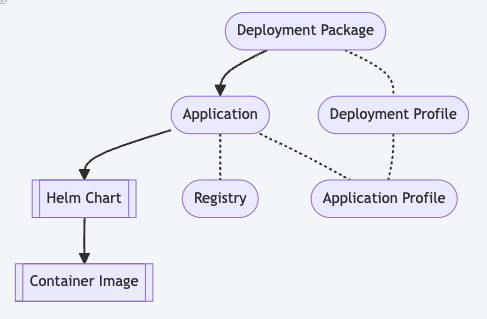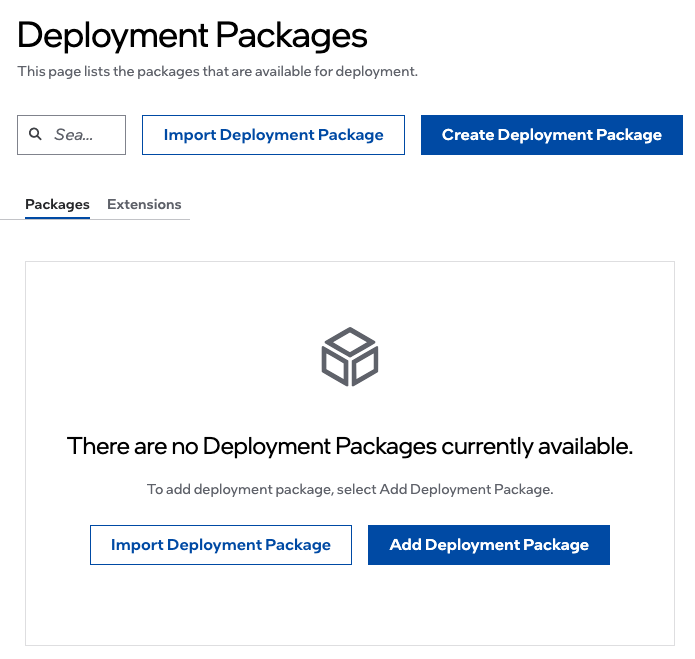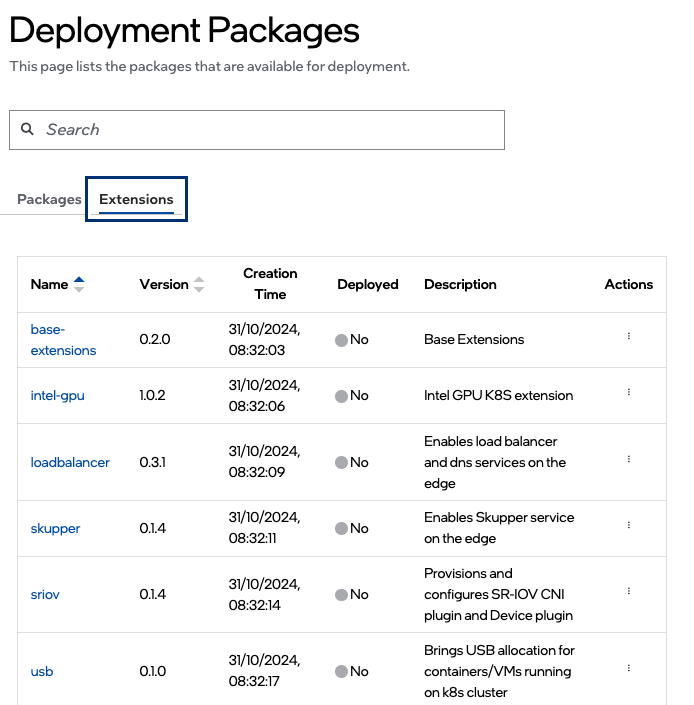Deployment Packages#
Deployment packages and applications are a concept introduced in the Edge Orchestrator.
They are used to simplify the deployment of applications to the edge. Deployment packages are a collection of applications and deployment profiles. Deployment profiles are configurations that define how an application must be deployed to an edge node.

See the general overview of Deployment Packages covering:
Deployment Package Structure
Deployment Package Design Strategies
Fine tuning Applications
View Deployment Packages#
- To view the Deployment Packages page, click Deployments tab and then click
Deployment Packages on the left menu. In the Deployment Packages page, you can view the list of deployment packages available for deployment. Using the search bar at the top of the page, you can search for a deployment package. The other actions that you can perform from this page are create, edit, deploy, export, and delete a deployment package.
Deployment packages are partitioned into 2 tabs:
Deployment Packages - Displays the list of user provided deployment packages that are available for deployment. The list is empty until a user adds an deployment package. See Deployments for more information on deploying a deployment package.
Extensions - Displays the list of system provided deployment packages. The list is populated with many preconfigured deployment packages. You cannot add or delete deployment packages from this list. See Deploy Extension Package for more information on deploying an extension package.


Deployment Package Fields#
Fields |
Description |
|---|---|
Name |
The name of the deployment package. You can click the deployment package name to view the details. |
Version |
The version number of the deployment package. |
Creation Time |
The creation date and time of the deployment package. |
Deployed |
Specifies the deployment status of the deployment package. It is marked as Yes when the deployment package is deployed, and No when it is not deployed. When deployed, a deployment package cannot be modified. If modifications are desired, the deployment package must be cloned. |
Description |
The description of the deployment package. |
Actions |
Click the three-dot icon to view details, deploy, edit, delete, or clone the deployment package. |
From this page, you can do the following tasks:
Command Line Management
For programmatic access and automation, you can use the orch-cli tool to manage deployment packages. For detailed command-line operations, see Orch CLI User Guide.